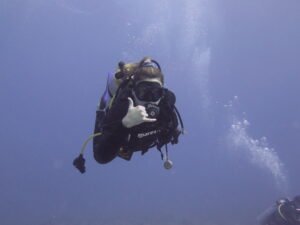What is a Safety Stop?
A safety stop is a period of time spent at a relatively shallow depth towards the end of a dive, typically at the 5 meter mark (15 feet), allowing nitrogen to off-gas from the diver’s body. It’s usually around 3 to 5 minutes long, during which divers remain buoyant and relaxed, without any rapid ascents or descents.
Why Are Safety Stops Important?
Preventing Decompression Sickness (DCS):
Decompression sickness, also known as “the bends,” occurs when nitrogen bubbles form in the body tissues due to rapid changes in pressure. Safety stops help to off-gas excess nitrogen, reducing the risk of DCS.
Minimizing Nitrogen Build-Up:
During a dive, nitrogen from the compressed air we breathe gets absorbed into our tissues. Spending time at a shallower depth during the safety stop allows the body to gradually release this nitrogen, lowering the risk of nitrogen-related diving illnesses.
Ensuring Smooth Transitions:
Safety stops serve as a transitional period between the deeper parts of the dive and the surface. They allow divers to acclimate to changes in pressure gradually, reducing the likelihood of any injuries.
Monitoring Well-Being:
The safety stop provides an opportunity for divers to check their equipment, air supply, and overall well-being before returning to the surface. It’s a moment to assess if everything is in order and if any issues need addressing.
How to Perform a Safety Stop:
- Stay Buoyant: Maintain neutral buoyancy using your BCD (buoyancy control device) or drysuit. Avoid any sudden movements or ascents/descents during the stop.
- Relax and Breathe: Take slow, deep breaths and relax. Use this time to enjoy the surroundings and observe marine life around you.
- Monitor Your Dive Computer: Keep an eye on your dive computer to ensure you’re staying within the recommended depth and time for the safety stop.
- Ascend Gradually: Once the safety stop is complete, ascend slowly to the surface, following all safety protocols.
Safety stops might seem like a small part of a dive, but they play a crucial role in ensuring the well-being of divers and preventing diving-related injuries. By taking the time to perform a safety stop at the end of each dive, you’re not only safeguarding your health but also enhancing the overall enjoyment of your underwater adventures. Remember, in scuba diving, safety always comes first!

